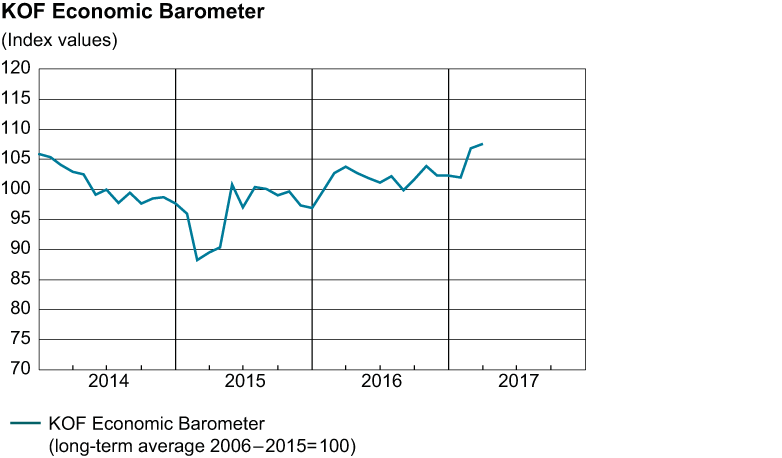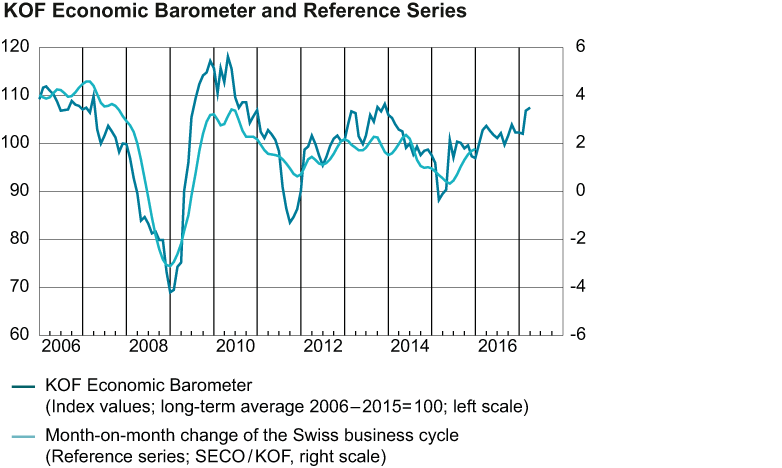KOF Economic Barometer Continues to Rise
In March 2017, the KOF Economic Barometer rose by 0.7 points to a new reading of 107.6. It thus reinforces its previous month’s climb to a level clearly above its long-term average. This indicates that the Swiss economy should grow at above average rates in the near future.

In March 2017, the KOF Economic Barometer climbed from 106.9 in February (revised down from 107.2) by 0.7 points to a level of 107.6. Accordingly, the Barometer not only confirmed the February reading, but even reached a slightly higher level. It thus stands markedly above its long-term average for the second time in a row, signaling above average growth rates for the near future.
The strongest positive contributions to this result come from the construction sector, followed by indicators relating to domestic private consumption and to the financial sector. Indicators regarding the manufacturing sector and the hospitality industry have practically remained unchanged. A slightly negative signal stems from the exporting industry.
Within the manufacturing industry, the unchanged overall outlook can be attributed to somewhat diverging signals. An improving sentiment is mainly visible amongst the architects. In addition, the electrical and the chemical industry are more optimistic than before. Negative signals, on the other hand, come from the metal and the textile industry. The remaining industry branches recorded hardly any changes.
Within the unchanged overall sentiment in the manufacturing industry, the assessment of the business situation improved followed by a more positive assessment of intermediate goods and inventories. The outlook for production, orders and employment are regarded more sceptical.

KOF Economic Barometer and reference time series: annual update
In September 2016, the scheduled annual update of the KOF Economic Barometer took place. The annual update of the Barometer concerns the following stages: redefinition of the pool of indicators that enter the selection procedure, update of the reference time series, a new execution of the variable selection procedure and a procedure to estimate missing monthly values of quarterly variables. The updated reference series is the smoothed continuous growth rate of Swiss GDP according to the new System of National Accounts ESVG 2010, released at the end of August 2015, which takes into account the release of the previous year’s annual Gross Domestic Product (GDP) data by the Swiss Federal Statistical Office. As a result of the indicator variable selection procedure, the updated KOF Economic Barometer is now based on 272 indicators (instead of 238 as in the previous vintage) from a pool of more than 400 potential indicator series. They are combined using statistically determined weights.
Source: KOF.ch
